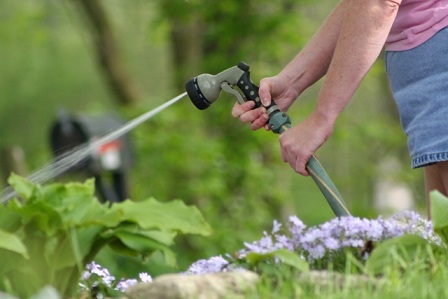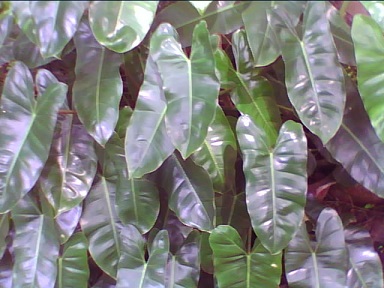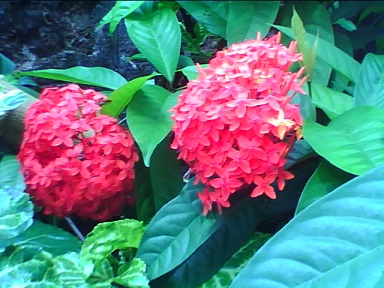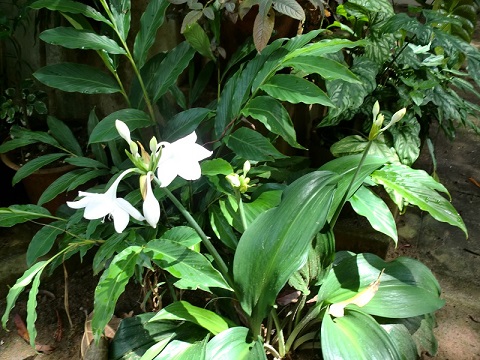Do You Have Green Fingers ?
There are some of those lucky few who are able to grow anything green with ease but there are some who successfully destroy what others have grown. It is a knack that people develop through practice and understanding of the greenery and plants that surrounds them. You have to take a keen interest and study the plants and their basic structure and needs to nurture them successfully.
Plants are like people, they have moods , likes and dislikes and we have to take care of them like children, looking after their needs regularly - watering them and tending to them.
What It Involves
While planning a garden we have to take many different aspects into consideration.
1. Space - Understanding the space you have available for gardening is an important first step for any gardening enthusiast. You have to plan your garden accordingly. For example:- you cannot have tree or trees that take up a radius of 10 feet in a small garden. once you chalk out the exact details of the space available for your garden it becomes very easy to plan your garden.
2. Design -You don't have to be an expert or understand garden design to know a good design when you see it. But if you are creating your own garden, it helps to know the basic elements that go into creating a neat home garden. It helps to know about plants and varieties of plants that grow successfully in your area or part of the world etc...
3. Planning - Don't have any set plans or grandiose plans if you are still a beginner because , chances are that you will want to change the plan many times in the near future , so, start out with a simple design for your garden that is easier for you to handle and later improvise or add on when you become more confident.
4. Time - Ideally, you should start work on your garden after winter months . A garden is a continuous work in progress that should get better every year. The more effort and time you put into your garden and plants the better it begins to look and bloom under your care.
5. Re-Designing Your Garden- A garden can become messy and overgrown after a while due to many reasons( it could be due to the changing weather and light or due to lack of time on your part) and it might become necessary to re design when that happens. Sometimes those interested in gardening simply want to try creating a new garden. This should not be a deterrant , instead you should be happy to undertake such experiments and challenges which teach you many practical things .
The Actual Planning
Now that you are all set to have a garden of your own, the next step is to actually plan and execute it. You can have a large garden, small space garden , a patio garden , Feng Shui garden, Bonsai garden or an indoor garden depending on your requirement. We have to take them one at a time.
Soil
1,The first and foremost step is to get your garden soil ready for plants. You have to till your soil either by hand for a smaller garden, or get a gardener to do it for you .The soil should be loose and move easily making it easy for plants to spread their roots and grow into healthy specimen.
2, Having done that it is better to Analyse your soil. Most garden centers advise you and tell you about different soil types , which help you determine which nutrients your soil has in abundance, and which ones are lacking. This is something that you need to know before you start planting your favorite plants since you need to balance out your soil quality by adding nutrients and fertilizers that are needed.
3, It is not enough to do this once, you have to be at it each year, year after year if you want a thriving , lush green space around your home. Each year, I do 1 or 2 things to improve the soil in my own garden . It might be adding dried wood chips or cow dung mixed with dry leaves and saw dust to lighten the heavy, soil that we have in our garden. Adding sand and Compost , especially homemade organic compost or manure is always good for increasing soil nutrients as well as creating a more workable soil that will hold moisture well.
4, If the soil quality in your garden is of poor quality then you need to replace the top soil with some high quality, organic/ecological topsoil that is available in most garden centers. Once this is done it mixes into the already existing soil and within a few years , as you keep on adding nutrients , manure and grow plants, the quality of your garden soil improves.

Watering
There is a saying Less is more and this readily applies to watering the plants and your garden.
Many people find it difficult to believe that plants need to be watered carefully and that over-watering leads to plants develop a shallow, immature root systems, incapable of reaching down deeply to find water on their own. It is essential that plants extend long roots to obtain their water, rather than getting it the easy way . The longer and sturdier the roots, the stronger plants in general are , and you will have less work to do keeping up with their constant water needs.
When to water and how much?
1, When your plants are Germinating, they require steady moisture, so light but consistent watering is needed during this time. Keep the soil moist, but not soaking wet. In fact, the top layer should be semi dry.
2, If your plants are kept outdoors and in pots then you may need to water them daily during summer months and on alternate days during winter months. Depending on how warm the day is. But those that have been planted on the ground, watering once or maybe twice a week should be sufficient. This is my regular watering schedule, though sometimes I water even less.
3, However, while watering, take the time to give each plant a really good, long soaking. Ideally, you should water long enough for 6 inches of soil to be saturated. This helps in water retention and you don't need to water the plants every day.
4, During dry and during very hot spells, you may find your plants are wilting in the heat of some particularly hot afternoon sun. At such times we need to pamper our plants by giving a little more water than usual. If they are left to dry for a long time they may wither and die, so you have to water according to their needs.
5, Make sure that you water your plants only during mornings and evenings. Watering that is done in the afternoon will quickly evaporate before the plants have a chance to get what they need. Try to water before 10 in the morning and after 4 or 5 in the evenings or even later. In fact, most gardeners agree that it is better to water the plants late in the evening for best results.
Sunlight
Ideally a garden should offer your plants a good 6-8 hours of direct sunlight. When selecting a spot for your new garden, this is one of the most important factors to keep in mind. Most flowering plants need sunlight to function well. However, some plants are more shad loving and care should be taken while planting or placing them .
Some plants that do not need sun all day are plants like Lettuces, Root Vegetables (carrots, radishes, turnips, beetroots, etc.), Peas, Cauliflower etc Those plants that need full Sun , which is 6 hours or more are vegetables like Beans, Cabbage, Broccoli, Cucumbers, Melons (all kinds), Tomatoes, Peppers and almost all flower plants that have yellow, white, orange and pink flowers.
Considering the sunlight available to your garden is as important as choosing the crops you grow. However, even if your garden has no full sun location can, you can grow a varied amount of different plants.

Taking Care of Your Garden
There are other jobs that need to be done in the garden on a regular basis .
Weeding and pruning – weeding and pruning is an important and integral part of gardening and as long as it is a continuous and on going process you can hope to have a neat and tidy garden where your favorite plants get the maximum benefit out of the nutrients in the soil.
When we grow plants close to one another weeds do not get a chance to grow. It is only when there is space between plants that weeds take over and start spreading. With crops like beans, radishes, peas, carrots and more, you can scatter your seed very thickly. When the plants come up, they will create a natural canopy to help shade out any weeds that may want to sprout.
Pruning or cutting out the dead branches and leaves is very essential. Some of those might be infected with fungus so it needs to be cleared so that new branches can grow. Pruning flowering plants after the flowering is over helps them grow new shoots and buds.
Adding Mulch - By adding a layer of organic material like dead grass , dead wood , dry leaves, hay, or even newspaper and cardboard, you can cut down on the weeds ability to grow vigorously. If there are trees around your house, dead branches and dry leaves that fall off can be collected , broken into smaller pieces and spread on plant beds which also helps in keeping the roots and the lower stem cool during the summer months.
Adding Compost or Manure - Best bets are homemade compost, or compost manure from a trusted source (like a local garden center or a farmer who makes manure out of cow dung). If in case those options are not available to you, there are some excellent brands of organic and ecological fertilizers in the market without the harmful chemicals that can be mixed with sol before using.
When to add fertilizers or manure? The best time to do so is after the plant has become established and begins to show signs of growth. During the important stages of development, like once your plants are a few inches tall before they really take off, or when they first start to set out flowers or is the time to add compost and water regularly to get the maximum benefit out of it. Proper timing makes all the difference when it comes to planting your garden.
Pesticides – this has to be done regularly only when you see pests beginning to attack your plant, if not watering and sprinkling water on the leaves takes care of most of the pests and fungii that tend to attack plants.

Gain Knowledge
It makes it easier to know your plants when you read and learn how long each plant needs to grow to maturity, what time of year it should be planted (early spring or summer, or even winter in some case), and when to begin ? Knowing these details will make all the difference between a successful and unsuccessful gardening. Most of it you learn through trial and error but having some knowledge that has been passed on by expert gardeners definitely helps.
Many people have the habit of creating a garden binder or notebook, where they record these kinds of details. You can note down all the details like when the plants were sprayed with pesticide or treated with manure and when they were planted etc etc...I have even kept some dry flowers in between the pages for remembrance although some of those lovely flowering plants have died and are no more there.
A few more points...
Drip-irrigation ( which is basically, a thin hose with lots of holes in it, strategically made and laid directly on the garden bed) is a great way to get water down to the roots without losing a lot through evaporation. This also saves on water consumption and once done one can save time. This can even be implemented in apartments and terrace gardens.
On the other hand, if you’re watering with a regular hose or sprinkler, it is preferable to do it in the morning ,because if the water doesn’t evaporate off the plants,it can promote rotting of the lower stem and roots. It is also a good idea to sprinkle water on to the leaves and buds which helps in washing off dust and small insects and fungus that might be latching on to the surface of the leaves.

Conclusions
It is always better to start small and learn the ins and outs of gardening as you go along. Grow what you love and take an interest in your plants. Plants respond to care like human beings do. More than anything gardening is one of the most satisfying hobbies that keeps one physically fit and in a healthy state of mind. So, instead of taking it as a chore, have fun and enjoy spending time in your garden amidst your plants instead of letting it stress you out.
Like it on Facebook, Tweet it or share this article on other bookmarking websites.

